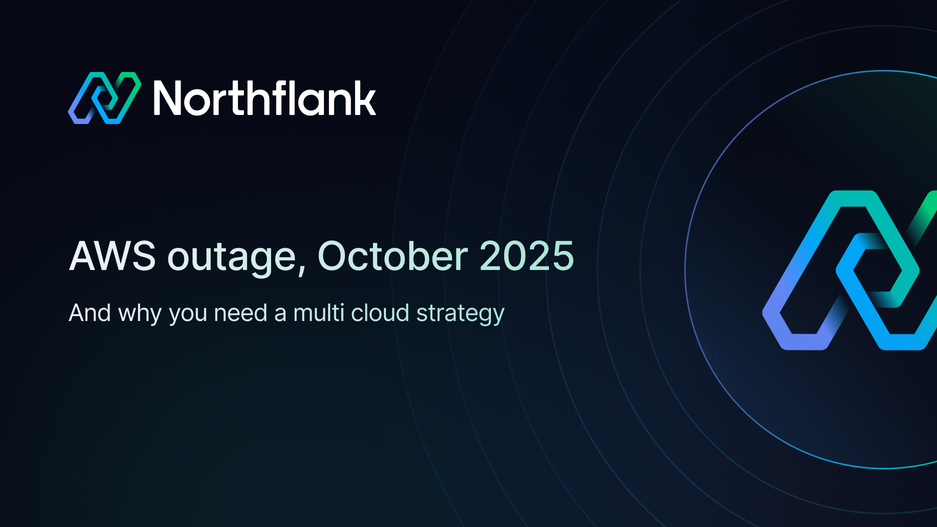

Today's AWS outage is another reminder that you need a multi-cloud strategy
This morning, millions of businesses and users worldwide experienced a harsh reminder of the fragility of single-cloud dependency. A major Amazon Web Services (AWS) outage beginning at approximately 3:11 AM ET has taken down dozens of popular applications, websites, and services including Snapchat, Roblox, Fortnite, Duolingo, Ring, Reddit, Coinbase, and even Amazon's own services.
The outage originated from problems with AWS's DynamoDB database service and DNS issues in the critical US-East-1 region hosted in northern Virginia. While AWS has reported "significant signs of recovery," lingering network issues continue to affect services that support thousands of apps and customer systems.
Experts estimate the total financial impact of this AWS service disruption will be in the billions of dollars. The outage affected:
- Major streaming platforms: Amazon Prime Video, Disney+, and other entertainment services
- Financial services: Coinbase cryptocurrency exchange, various banking platforms
- Airlines: United Airlines and Delta Airlines reported system disruptions affecting apps and websites
- Gaming platforms: Fortnite, Roblox, and other cloud-based games went offline
- Enterprise tools: Canva, Perplexity AI
- Government services: UK government websites including Gov.uk and HM Revenue and Customs
This AWS outage today represents a global ripple effect, as the US-EAST-1 (N. Virginia) region is AWS's oldest and largest data center hub, housing control planes for many global AWS services including Amazon Identity and Access Management (IAM) and Amazon CloudFront.
Today's AWS outage perfectly illustrates the critical vulnerability of relying on a single cloud provider.
As one expert noted, "The internet was originally designed to be decentralized and resilient, yet today so much of our online ecosystem is concentrated in a small number of cloud regions. When one of those regions experiences a fault, the impact is immediate and widespread."
Single point of failure: AWS has experienced multiple significant outages in recent years, including disruptions in November 2014, September 2013, December 2012, and the major December 2021 outages that affected Netflix, Spotify, Venmo, and Tinder.
Vendor lock-In: Businesses become entirely dependent on one provider's infrastructure, pricing, and service availability.
A multi-cloud approach distributes your infrastructure across multiple cloud providers, ensuring business continuity when any single provider experiences issues.
This is where Northflank comes in.
1. Reliability and uptime Organizations using multi-cloud strategies from the start cite reliability as the most important benefit. Combining resources from multiple clouds means that if one provider has an outage, your entire backend won't fail, you simply compensate by shifting resources from one provider to the next.
2. Disaster Recovery Take Fidelity Investments… they moved thousands of critical applications across multiple cloud providers and saw major improvements in agility and resilience. Or look at what happened during Google Cloud's outage in June 2025: while competitors crashed, e-commerce giant Mercado Libre stayed online with zero downtime because they had workloads running across multiple clouds. They actually gained market share while everyone else was scrambling to get back online.
3. Cost Optimization Multi-cloud mitigates financial risk, opening up negotiation opportunities with future contracts. It's harder for a provider to raise rates or change terms when you have other options.
Northflank is a comprehensive multi-cloud management platform designed to eliminate the complexity and risk of single-cloud dependency. Built for businesses that can't afford downtime, Northflank provides a unified solution for deploying, managing, and scaling applications across multiple cloud providers including AWS, Microsoft Azure, Google Cloud, and specialized cloud services.
Unlike traditional cloud management tools that focus on single-provider optimization, Northflank takes a cloud-agnostic approach. The platform acts as an intelligent orchestration layer that automatically distributes your workloads across multiple cloud environments, ensuring maximum uptime, cost efficiency, and performance.
- Multi-Cloud Orchestration: Deploy applications across AWS, Azure, Google Cloud, and other providers from a single interface
- Automated Failover: Intelligent traffic routing that switches providers instantly during outages
- Cost Optimization: Real-time analysis to run workloads on the most cost-effective cloud at any given moment
- Unified Monitoring: Single dashboard visibility across all your cloud environments
- Global Disaster Recovery: Comprehensive offsite backup solutions with failover regions and global backup capabilities
- Multi-AZ Support: High availability across multiple availability zones for all data services
- Multi-Provider Integration: Seamless, consistent integration with 5+ major cloud providers including AWS, Azure, Google Cloud, and Oracle Cloud
Managing multiple cloud providers can be complex, but Northflank simplifies the process with:
- Single places for managing workloads across AWS, Azure, Google Cloud, and other providers
- Automated failover capabilities that switch traffic seamlessly during outages
- Real-time monitoring and alerting across all cloud environments
- Automatic routing of applications to the most cost-effective and performant cloud provider
- Dynamic resource allocation based on demand and provider availability
- Geographic optimization to reduce latency for global users
- One-click deployment across multiple clouds
- Standardized infrastructure-as-code templates
- Very low downtime migration between cloud providers
Start with critical workloads Begin by implementing cross-cloud DNS failover and pre-staging cold workloads in alternate environments. Keep "warm standby" or "cold standby" infrastructure pre-configured on another cloud and automate scaling when needed.
Implement smart load balancing Global load balancing solutions using DNS-based or anycast approaches help route traffic efficiently across cloud environments. This not only improves performance but also enables seamless failover during outages.
Design for independence Minimize hard dependencies on cloud-specific APIs for core business logic. These APIs can become bottlenecks during outages.
Around 85% of enterprises now use a multi-cloud strategy, and today's AWS outage demonstrates exactly why. Every minute of downtime costs your business money, customers, and reputation.
Real-world impact: The March 2017 AWS outage affected roughly 150,000 websites, including major brands like Airbnb, Business Insider, and Expedia. Companies with multi-cloud architectures maintained operations while single-cloud competitors went dark.
Don't let the next cloud outage catch your business unprepared.
Northflank’s multi-cloud platform provides:
- 99.99% uptime guarantee through intelligent failover
- 30% average cost savings through optimized provider selection
- Zero-downtime deployment across multiple cloud providers
- 24/7 expert support for seamless cloud management